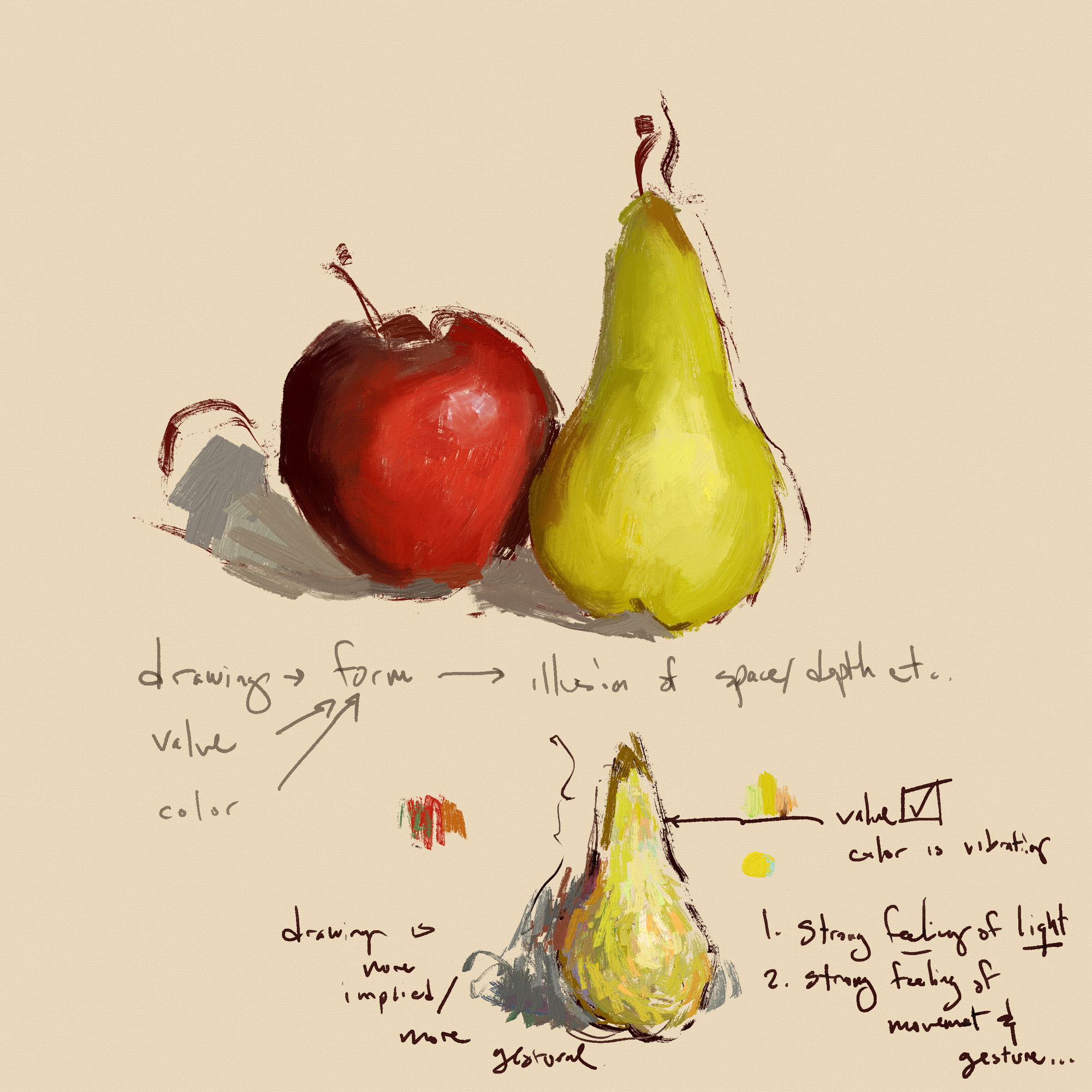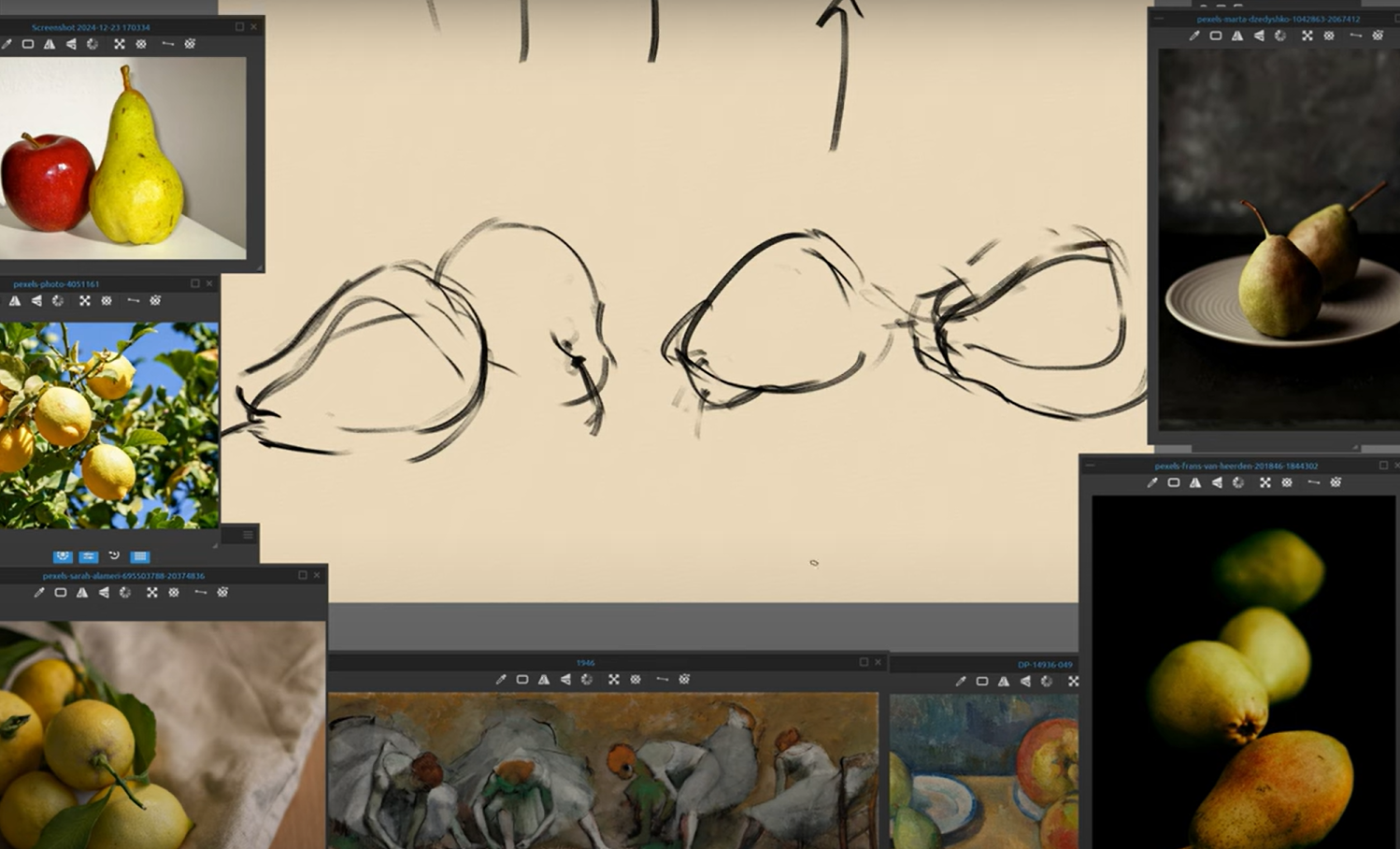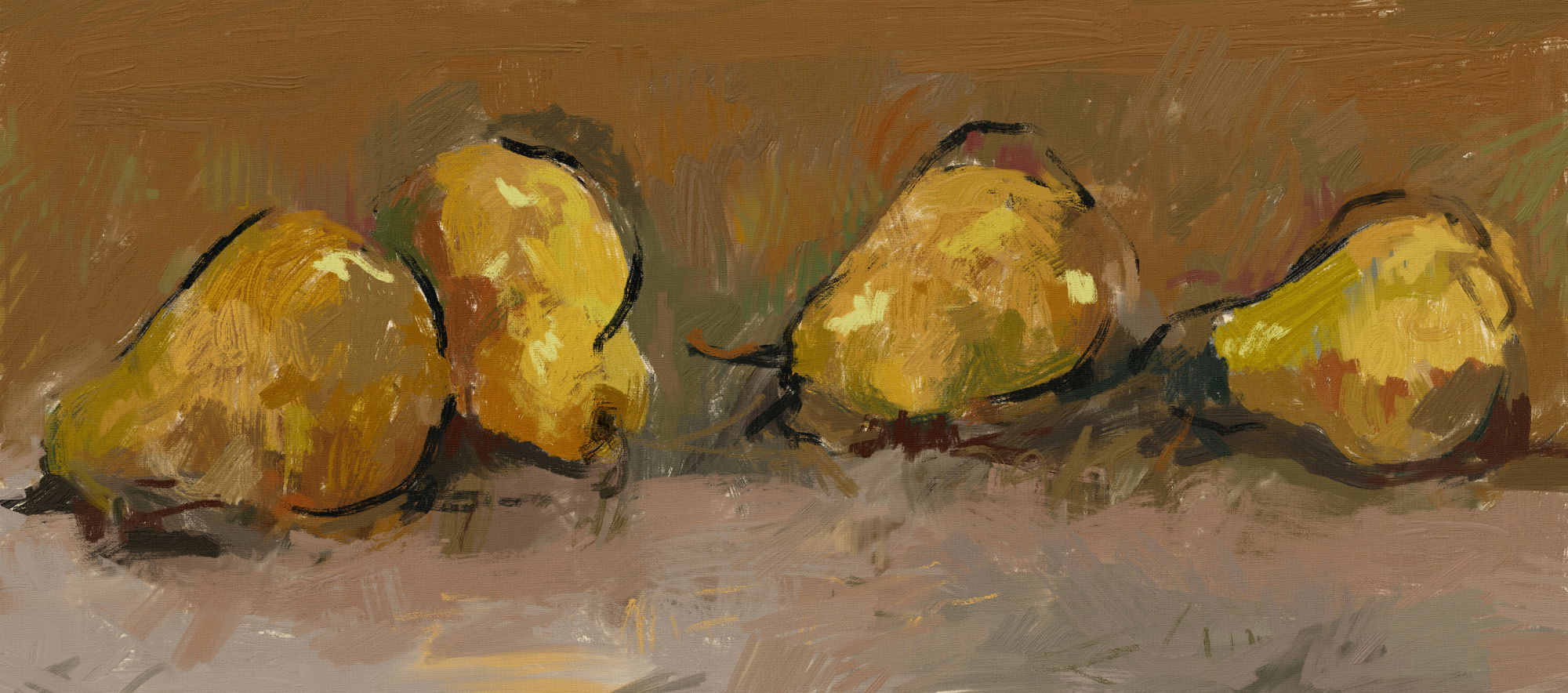Throughout the history of art, many styles and movements have influenced how we approach our work today. Impressionist style introduced a fresh perspective, moving away from the rigid structures of past traditions while embracing freedom, movement, and spontaneity. In this Rebelle Master Series by Daniel Ibanez, we’ll explore how artists can learn from the Impressionists. Let´s start with the work of Edgar Degas, and the use of their methods to bring more energy and creativity into our own practice.
Watch on YouTube: youtu.be/SEr-ofEimps
Traditional Art and the Birth of Impressionism
Before the rise of Impressionism, art was often about precision, form, and careful construction. Movements like Classicism, Neoclassicism, Romanticism, and the Renaissance emphasized accurately rendering the human figure, light, and space. Artists like Michelangelo exemplified this approach, creating masterpieces that represented the human form in three dimensions, crafted through a mix of geometry, linear perspective, and a deep understanding of light.
However, by the time Impressionism emerged, artists began to challenge these traditional views. Instead of striving for hyper-realistic renderings of space and form, they turned their focus to capturing fleeting moments, the effects of light, and the energy in the scene. Instead of building up a scene through layers of detail and perfect perspective, they embraced the idea of “suggesting” rather than “rendering.” The result was a painting style that communicated not just the physical world, but the feeling of that world in that moment.
Edgar Degas: The Master of Movement
One of the most influential figures in this movement was Edgar Degas, particularly known for his depictions of ballet dancers. His work is an incredible study of the rhythm of life, capturing figures in motion rather than frozen moments. In paintings like The Dancers, Degas didn’t aim for realistic anatomical accuracy but rather sought to convey the gesture, energy, and dynamism of the dancers.The Dancers by Edgar Degas, Pastel and charcoal on paper. The Met collection
What’s fascinating about Degas' approach is the way he used line and mark-making to depict motion. Instead of constructing detailed forms from scratch, he allowed the gesture of the body and the movement to guide the sketching process. The background of his paintings often remains ambiguous, with blurry marks and soft gradients that suggest space without solidly defining it. This technique helped remove the illusion of three-dimensionality, focusing instead on the transience and impermanence of the moment.
In this sense, Degas and the Impressionists opened up new possibilities for artists, suggesting that we don't always need to perfectly replicate the world around us to express something deeper. They taught us to let go of rigid technicality and embrace a more fluid and energetic approach to art.
Adapting the Impressionist Approach to Digital Art
As digital artists, we have the opportunity to blend the traditional techniques of the Impressionists with the freedom and flexibility that technology affords us. One key lesson we can learn from the Impressionists, especially Degas, is the importance of gesture and movement in art.
Consider a simple still life, such as a composition of apples and pears. When approaching this subject in the traditional sense, artists might carefully construct the form, defining the highlights, shadows, and textures to create the illusion of three-dimensionality. In contrast, the Impressionist approach would focus less on perfect realism and more on capturing the energy of the forms, the interplay of light, and the dynamic nature of the objects. This is where digital tools, like Rebelle, come into play. Using a broad, free-hand brushstroke allows you to capture the energy of the moment without worrying about the precise placement of every element. By painting in "gestural" strokes, we can create a piece that’s less concerned with perfection and more focused on expressing the movement and rhythm inherent in the objects themselves. Even in a static still life, there’s a sense of life and energy.
This is where digital tools, like Rebelle, come into play. Using a broad, free-hand brushstroke allows you to capture the energy of the moment without worrying about the precise placement of every element. By painting in "gestural" strokes, we can create a piece that’s less concerned with perfection and more focused on expressing the movement and rhythm inherent in the objects themselves. Even in a static still life, there’s a sense of life and energy.
Sketching with Gesture
To replicate the Impressionistic process in your own work, start by focusing on the gesture of your subject. This could be a dancer, a tree branch, or even a pear. Sketch loosely and fluidly, allowing the movement to guide your hand. Don’t worry about rendering every detail or getting every line perfect. Instead, think about how the shapes interact with each other. For instance, in Degas’ work, his dancers are often depicted in overlapping poses, capturing the rhythm of the body in motion. In digital art, we can take this one step further by working in layers. Begin with broad strokes that capture the overall gesture and feeling of the subject. Then, build up color and texture on top, allowing your marks to suggest form rather than define it rigidly. Let the brushstrokes remain visible, just as Degas allowed his initial sketches and marks to shine through in his finished works.
In digital art, we can take this one step further by working in layers. Begin with broad strokes that capture the overall gesture and feeling of the subject. Then, build up color and texture on top, allowing your marks to suggest form rather than define it rigidly. Let the brushstrokes remain visible, just as Degas allowed his initial sketches and marks to shine through in his finished works.
The Freedom of the Impressionist Approach
What makes the Impressionist style so liberating for artists is its acceptance of imperfection and fluidity. As digital artists, we can experiment without the constraints of traditional media. Using features like layering, blending, and undo functions, we have the ability to make bold, gestural decisions without fear of ruining a piece. This approach allows us to focus on the energy of the subject and explore multiple creative possibilities in real-time. If you find yourself getting bogged down by technical concerns in your artwork, try focusing more on the movement and rhythm of your subject. Whether you're painting a figure, an object, or even a landscape, embrace the idea that you don’t need to get everything perfect—just capture the essence of the moment. The result might surprise you with its vibrancy and energy.
If you find yourself getting bogged down by technical concerns in your artwork, try focusing more on the movement and rhythm of your subject. Whether you're painting a figure, an object, or even a landscape, embrace the idea that you don’t need to get everything perfect—just capture the essence of the moment. The result might surprise you with its vibrancy and energy.
Final Thoughts
The Impressionists, led by artists like Edgar Degas, were pioneers in challenging conventional views of art and representation. By focusing on movement, light, and color rather than strict form and perspective, they opened up a world of possibilities for modern artists. Whether you’re a beginner or a seasoned professional, experimenting with the gestural, free approach of the Impressionists can help you approach your art in new and exciting ways.
Incorporating the spirit of Degas and the Impressionists into your digital art can be a rewarding and liberating process. So next time you sit down to create, remember to think about gesture, movement, and energy—let go of the need for perfection and embrace the beautiful imperfections of life captured on canvas.
The journey where we learn from the Impressionists does not end here. Stay tuned for the second part of this Rebelle Master Series with Daniel Ibanez.
Happy Painting,
Escape Motions Team
-----
Daniel Ibanez is a fine artist and illustrator who works out of beautiful Colorado. He grew up plein air painting mountain landscapes and western imagery. He has a love of painting the human figure, portraits, and landscapes. Daniel has worked on films, comics, video games, and tabletop games. While his range of subjects is diverse, all of his work is rooted in his traditional art background. He has been an oil painter since he was 13 years old. His work covers a wide spectrum of subjects, from sci-fi illustrations to alla prima landscapes. He has a digital portrait painting class with Domestika and a growing YouTube channel for tutorials and demonstrations. Find him on Instagram and say hello!



